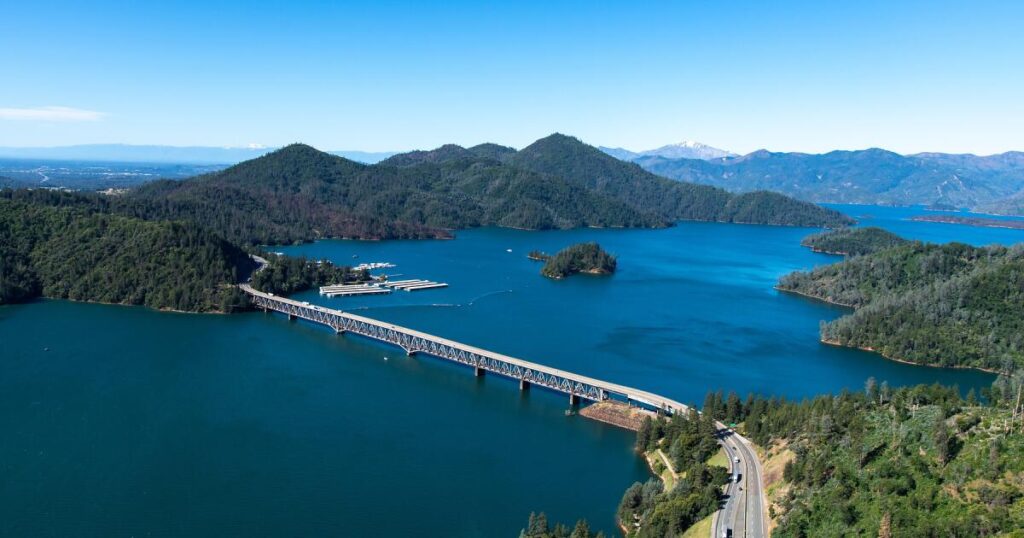For the second year in a row, Californians are celebrating the renaissance of the state’s reservoirs.
Lake Shasta, the state’s largest reservoir, is filling up again after reaching dangerously low levels during the drought years of 2019-2022.
The satellite image below from NASA shows the lake (left) in April 2022, when it was at 40% capacity, compared with two weeks ago, when it was at 96% capacity.
On May 7, the lake level was 114% of the historical average. The so-called bathtub ring that clearly outlined the lake in 2022 – and was visible from space – has disappeared by 2024.
The photo below shows a closer look at Shasta’s previous bathtub ring. The photo was taken on October 13, 2022, near the Pitt River Bridge and shows the lake at 32% full.

(Andrew Neraliti/California Department of Water Resources)
Another photo, taken in the same area on May 9, shows the results of two wet winters.

(Sarah Nieves/California Department of Water Resources)
That day the lake’s bathtub ring disappeared, and water covered the supports of the Pitt River Bridge and the previously barren land adjacent to the pier.
A series of winter storms brought precipitation across the state in late 2023 and early 2024, helping to refill reservoirs, which started at higher than normal levels due to the 2022-2023 rainy season.
Officials even released excess water from reservoirs in February to prepare for more rain, something they had not done in nearly five years.
Lake Oroville, the state’s second-largest reservoir, is also full. Data from the Ministry of Water Resources shows that the water level was 100% full on May 20.
Water was also released in early May, but it still reached 128% of historical capacity.
On May 21, 16 of California’s 17 largest reservoirs were above historical levels.
Despite this good news across the state, groundwater remains a concern.
In the 2023-24 water year, the state added 4.1 million acre-feet of water — nearly the size of Lake Shasta — to depleted groundwater reserves by moving excess water from rivers into open spaces where it can percolate downward.
Still, experts say the state has a long way to go and needs more wet weather and improved groundwater recharge systems to fill the 40 million acre-foot gap that has accumulated over the past two decades.
“The impressive 2023 recharges are the result of the hard work of local agencies and national efforts,” Paul Gosselin, deputy secretary of the Department of Water Resources, said in a release.
“But,” he said, “we must do more to be ready to capture and store water when wet years come.”

